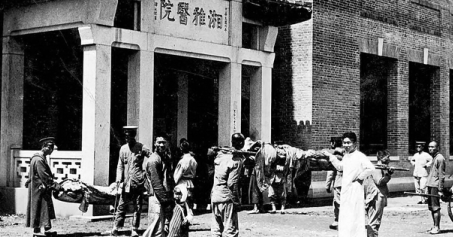Institution boasts proud history of cooperation and medical achievements
By GUO YALI | CHINA DAILY | Updated: 2020-02-21 09:02

Xiangya Hospital is one of the oldest in China. Its history can be traced to 1905, when Edward Hume, a young physician in the United States from the Yale-China Association, arrived in Changsha, capital of Hunan province, to conduct medical education sessions and treat patients.
The following year, he established Yali Hospital (Yali is the transliteration of Yale in Chinese), one of the earliest Western hospitals in China.
Hume later wrote several books about his medical work in China, including The Chinese Way in Medicine and Doctors East, Doctors West: an American Physician's Life in China.
In 1910, Yan Fuqing, another significant figure in the development of Western medicine in China, returned to Changsha as the first Chinese to graduate from the Yale School of Medicine, and started working with Hume.
Nina Gage, a nurse from the US, established a training program for nurses at Xiangya Hospital. The program later evolved into the Xiangya Nursing School.
In 1914, with the support of Tan Yankai, the governor of Hunan province, the Hunan Yuqun Association signed an agreement with the Yale-China Association. This led to the founding of the Xiangya Medical College (also known as Hsiang-Ya, which translates as Hunan-Yale), China's first such college based on international collaboration.
The following year, a new hospital was built outside Changsha's North Gate, resulting from the merger of Yali Hospital and Xiangya Medical College. Tan named the new institution Xiangya Hospital. The Red Mansion, a building at the hospital when it was first built, is still in use. Designed by US architect Henry Killam Murphy, it is a cultural heritage protected at national level.
Medical education and care, along with training for nurses, were integrated at the new hospital, where the first 10 students, who graduated in 1921, all became experts in modern medicine in China.
In 1922, a US education delegation named Xiangya Hospital and Peking Union Medical College as the best medical education institutions in China.
During World War II, medical workers from Xiangya Hospital treated numerous casualties and refugees. In 1938, the hospital had relocated to Chongqing, Guiyang, Guizhou province, Yuanling, Hunan province, and other areas of the country.
The hospital did not return to Changsha until after the war. All its buildings and facilities in Changsha were damaged during the battle for the city in 1942.
Its faculty and staff members were devoted to rebuilding the campus, and medical care, education and research soon resumed in Changsha.
Chairman Mao Zedong, a Hunan native who introduced family members and friends to the hospital many times, once wrote in a letter,"If you cannot get cured at Xiangya Hospital, you cannot get cured at hospitals in Beijing either."
In 1979, the hospital resumed cooperation with the Yale-China Association. Its link with the association had been cut since the 1950s.
Today, the Xiangya School of Medicine and the four Xiangya hospitals set up over the years are all affiliated to Central South University in Changsha, which was established in 2000 when three universities merged.
Xiangya continues to be a top name in medical circles at home and abroad.























